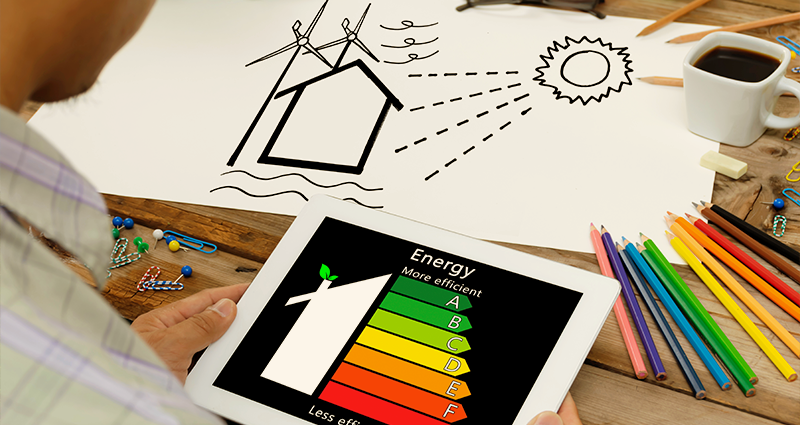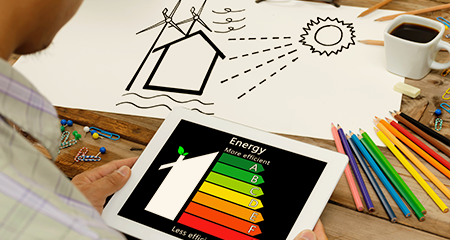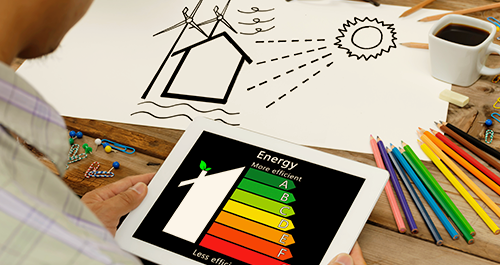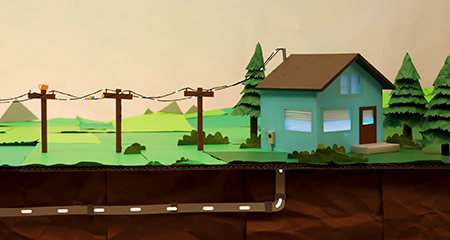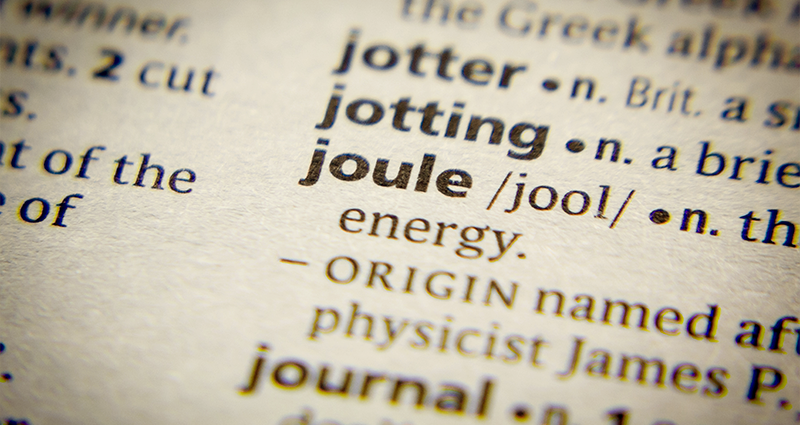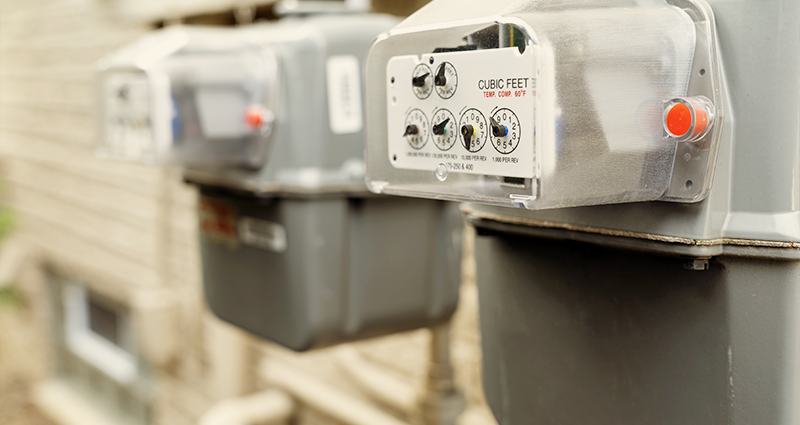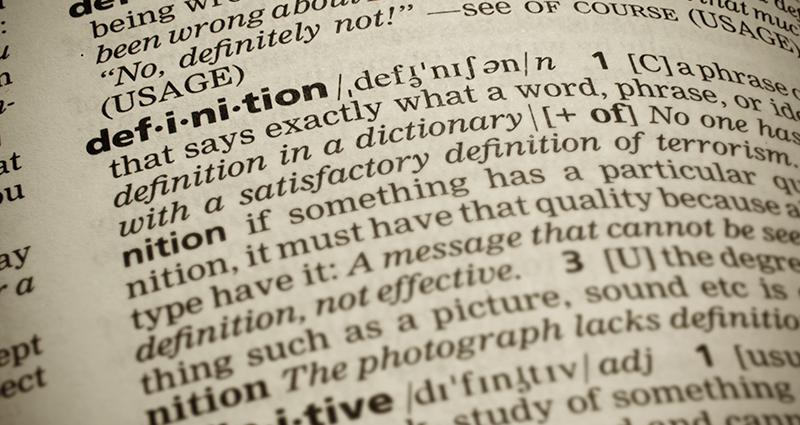How is energy measured?
Energy is measured in joules. You can learn more about joules, gigajoules and your energy bill in that article, but we’ll quickly break it down here, too.
Electricity in kilowatt-hours (kWh)
Electricity’s primary unit of measurement is power, and we determine that by the energy consumption rate. So, if a watt (power) is one joule per second of energy used, then a joule of electrical energy is one watt-second.
Let’s use the example of turning on a light. Watts measure the amount of energy your lightbulb uses for every second it is switched on. So, if you have a 60-watt lightbulb, it uses 10 joules of energy for every second you have it on.
A single watt is a tiny unit of power. So, to measure how much energy is used in a home, the electrical utility provider will use kilowatts (kW), which is 1,000 watts. The electricity provider must know how many kilowatts your home uses over an hour, which is easier to calculate compared to by the second. That’s where kilowatt-hour (kWh) comes in.
For example, if you clean the floors with a 1,000-watt vacuum cleaner for one hour, you’ll consume 1kWh of energy. Explaining kW vs kWh is simple: a kilowatt is a unit of power, whereas kilowatt-hours measure the energy used and the amount of time you use them.
Natural gas in gigajoules (GJ)
For natural gas, you can also use joules to measure the amount of thermal energy your oven needs to bake a cake or your furnace needs to heat your home. Most natural gas appliances will likely have a British Thermal Unit (BTU) rating. Converting the BTU to joules is easy.
One BTU is equal to 1,055 joules. So, if your furnace has a BTU rating of 100,000 BTU/hour, it uses 105,500,000 joules of energy per hour.
A joule of energy is a tiny measurement. So, your utility provider will measure your natural gas use in gigajoules (GJ). One GJ is equal to one billion joules! For context, it takes about 100 GJ to heat a new, average-size single home in Canada for one year.
Learn more about measuring natural gas use in a home.
Understanding energy bill
Your energy bill will show your monthly electricity and natural gas use multiplied by the rate charged by your utility provider. Energy companies typically charge for electricity on a price-per-kWh and natural gas on a price-per-GJ basis.
Electricity use
On your bill, you’ll see how much kWh you consumed over the billing period. Have you ever wanted to break that down to see what home appliances or activities cost the most electricity? Here’s an example of how to do that.
Let’s say you have a 600-watt treadmill you use for two hours each day. To figure out how much you’re paying to exercise on your treadmill each month, start by:
- Converting watts to kilowatts (kW).
600 watts 1000 watts = 0.6 kW
- Multiplying kilowatts by daily use
0.6 kW X 2 hours = 1.2 kWh
- Multiplying daily use by 30 days (one month)
1.2 kWh X 30 days = 36 kWh/month
Finally, multiply your monthly usage by your electricity rate. If, for example, your electricity supplier charges $0.13 per kWh, you’ll owe $4.68 in energy charges for your treadmill use in a month.
Natural gas use
For natural gas, you’ll see how much GJ you consumed over your billing period. If you want to learn how much of that is used for heating your home, you can use this equation below.
Let’s use the example of a 100,000 BTU/hour furnace and say you use it for 150 hours a month. First, we need to figure out how many GJs of energy you’re using to heat your home:
- Multiply BTU rating by hours of use.
100,000 BTU/hour X 150 hours = 15,000,000 BTU
- Convert BTU to joules.
15,000,000 BTU X 1055 joules/BTU = 15,825,000,000 joules
- Convert joules to gigajoules.
15,825,000,000 joules 1 billion joules = 15.825 GJ
The final step is multiplying GJs by your natural gas rate. For this example, we’ll say it’s $5.69 per GJ. You’d owe about $90.00 in energy charges for the month.
What are those other charges on my bill?
Okay, now you understand how your electricity and natural gas are measured and billed, but what about those other charges?
Transmission, distribution or delivery charges: These fees help cover the cost of moving energy from the source through the transmission system. For example, these fees help pay for wires for electricity and pipelines for natural gas. They also pay for the maintenance and repairs of powerlines, towers, pipelines, etc.
Riders: These are adjustments the transmission or distribution utility needs to cover costs. The Alberta Utilities Commission reviews and approves riders.
Carbon tax: The Federal Carbon Tax is charged by the Government of Canada. We pay this tax on the greenhouse gas emissions created by our home’s natural gas consumption.
Administration fees: These fees cover the cost of providing customer service (including online and telephone service), calculating, creating and delivering your bill.
Have questions about your energy bill?
We understand that it’s important to know what you are paying for and how that is measured. If you have any questions, please reach out to us! We are happy to help.
























